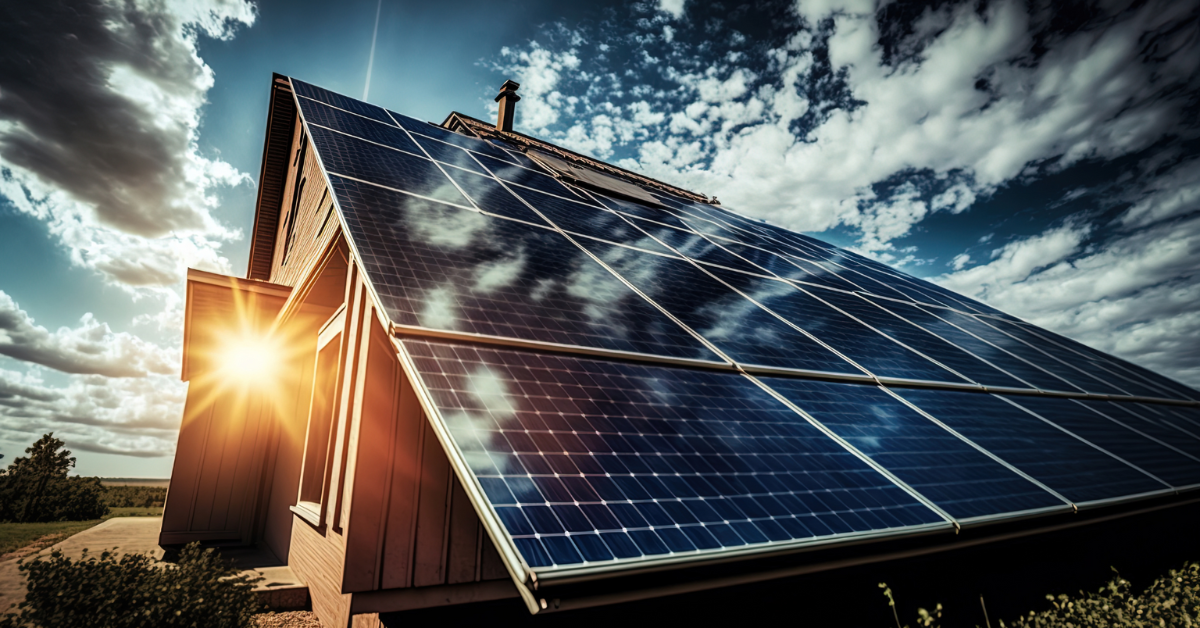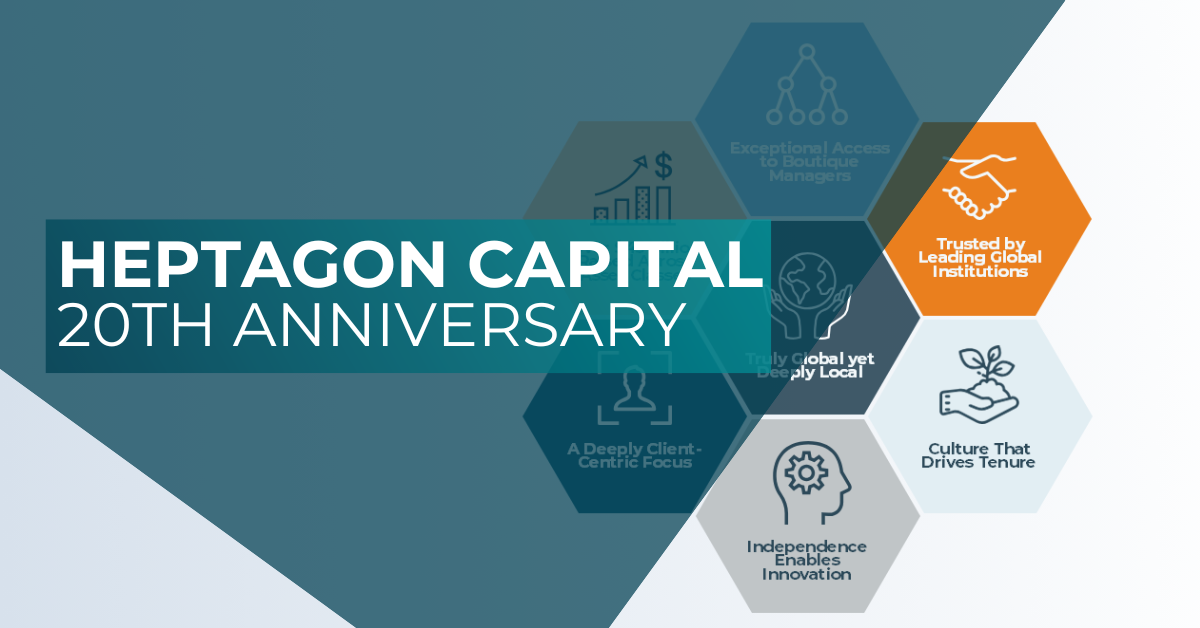
Future Housing: Home! Sustainable Home!
Opinions expressed whether in general or in both on the performance of individual investments and in a wider economic context represent the views of the contributor at the time of preparation.
Executive summary: We need a more sustainable approach to home building. A combination of regulation and materials innovation is fortuitously driving the industry in this direction. The house of the future may well be prefabricated, built out of engineered timber and contain solar panels on its roof. Boilers will be out and heat pumps in. Everything might be controlled by a smart and integrated set of software. There are, of course, major differences between conception and installation. Cost, sufficient material availability and appropriately trained contractors are major considerations. Nonetheless, by the end of this decade the global green building materials market could be worth at least $600bn. For investors, the opportunity is significant. In a still-evolving industry, expect there to be multiple potential beneficiaries across several market segments.
Buildings are among the world’s worst climate offenders, yet we need more of them. Over 60,000 homes will need to be built every day for the next 80 years to accommodate shifts in income, demographics and urbanisation. That’s equivalent to almost 2bn new homes before the end of this century, according to data from the World Economic Forum. In India alone, the equivalent of a city the size of Chicago needs to be developed annually to meet housing demand.
At the same time, despite over $6.3tr spent on renewable energy and another $3.3tr spent on electricity networks since 2005, global energy use is still ~80% reliant on fossil fuels (per JP Morgan). This is because the pillars of modern society – steel and cement (as well as ammonia and plastics) – are made primarily using fossil fuels. Buildings account for over 35% of global carbon emissions, with the residential segment responsible for over two-thirds of this figure (per the United Nations Environmental Programme), owing to a combination of day-to-day running and the embodied carbon in the construction process.
Take concrete. About three tonnes of it are poured annually for every person in the world. If concrete were a country, then it would be the third largest global emitter of carbon dioxide, after China and the US (per The Economist). Next, consider buildings. More than 90% of homes in the US and over 75% in Europe are under-insulated, according to the European Commission. A poorly insulated home can lose 30% of its heat through the attic, 25-30% through the walls, 10% via windows and doors and another 10% from the floor.
We clearly need a more sustainable approach to home building. While the terms ‘sustainable’, ‘future’ and ‘green(er)’ are often used interchangeably in the context of this debate and many definitions for such an approach to construction exist, we take a sustainable home to mean a building that is constructed, operated and maintained in ways that reduce the owner’s carbon footprint and the impact of climate change.
The good news is that a combination of regulation and innovation are accelerating the drive towards sustainability. Begin with regulation. Almost 50 countries now have mandatory construction codes that cover their entire building sector, while another 30 have voluntary construction codes, according to the International Energy Agency. The backdrop for this is the United Nations’ landmark Paris Agreement of 2015, which aims to limit increases in temperature above pre-industrial levels to no more than 1.5 degrees. The UN estimates that some 80% of countries now refer to buildings as part of their Nationally Determined Contribution action plans aimed at managing emissions.
The UK is a leading example. Its Future Homes Standard (FHS) aims to ensure that new homes built from 2025 will produce 75-80% fewer carbon emissions than homes built under current regulations. The FHS aims to decarbonise new homes by focusing on improving heating, hot water systems, and reducing heat waste. Out will go gas boilers. In will come solar panels. The EU has launched a Buildings Directive with similar ambitions. California has a Green Buildings Standards Code (although much of the rest of the US is without similar initiatives). Other countries as diverse as Japan, India and Chile have also embraced new buildings codes.
At the same time that standards are improving for the better, there is no shortage of innovation across the whole construction ecosystem. Encouragingly, two different dynamics are at work: the build of new eco-friendly buildings and the retrofitting of existing buildings. As a starting point consider that in buildings, energy is used for a wide array of applications, including heating, ventilation and air conditioning systems (HVAC), domestic hot water (DHW), lighting, household appliances, and electronics.
Begin with the easy wins: heating and energy. The key is to drive a shift away from fossil fuels. Air source heat pumps provide one solution, avoiding the need for a boiler. They work by transferring heat from outside air to water. This can then be moved around a house through radiators, pipes or underfloor heating. Water could also be stored in a hot water cylinder to heat taps, showers and baths. Other initiatives such as thermal skirting boards, infra-red panels and waste-water heat recovery systems can drive further efficiencies.
Just as heat pumps can be added into existing homes, replacing older boilers, so could current buildings have photovoltaic solar panels added. Subject to rooftops being unshaded and ideally south-facing, then the addition of 12-15 panels per roof could generate around half the electricity usage of a current UK home (per data provided by the Government when implementing the FHS legislation). Batteries would allow for storage. Excess energy could also conceivably be sold back into grid networks. Both money and energy might be saved through the installation of smart home control systems too.
When it comes to new build, existing products can be improved, and new products introduced. Concrete, just like glass, is infinitely recyclable. Double-glazing has existed for many years, but newer triple-glazing can typically increase window insulation by an additional 20%. However, it was only in 2022 that the world’s first cement (called ECOPact) was launched with 20% recycled construction and demolition waste. Lafarge Holcim, the world’s largest cement producer and the manufacturer of ECOPact, says that it is now available in 27 markets globally. It recycled over 30m tonnes of materials last year.
As far as new products are concerned, there is a growing trend towards prefabricated homes. Manufacturers produce these homes in factories and transport them to the building site, where they are permanently assembled. They do not take nearly as long to construct as traditional houses, making them energy-efficient and cost-effective. Engineered timber often features heavily. Think of this as a composite of different layers, each designed to meet the requirements of specific components such as floors, panels, cross-braces and beams. Besides engineering the shape of a component, designers can align the grains in the layers to provide levels of strength that rival steel, on a product that is up to 80% lighter. As an extreme, some firms are experimenting with carbon negative home design, using fully recycled materials from old foundations to shower enclosures built from recycled yoghurt pots.
Close to where your author lives, in London’s W9 postal district, two developments provide an insight into future construction. When 300 Harrow Road is complete, Westminster Council says that it will be the leading development in the country in terms of airflows rates for its heating and cooling system. Residents will benefit from use of air source pumps, solar panels, rainwater collection and living roofs, resulting in lower energy bills and a reduction in carbon emissions. Less than two miles away, on the Edgware Road, the Berkeley Group is converting a brownfield site into housing as part of its Vision 2030 project. Homes in the development are billed as low carbon, constructed from high-performance building fabrics. The site also aims to deliver a minimum 10 % net biodiversity gain. Taylor Wimpey, another builder, seeks to go further. It launched at the start of the year a flagship zero-carbon ready homes trial, an industry first. Your author visited its Westland Heath development as part of his research for this note. Heat pumps, thermal skirting, smart home systems and more featured.
Projects such as these are encouraging. Sales of heat pumps rose 10% globally in 2022 (the last year for which data was available, per the IEA) and by nearly 40% in Europe. In France and the US, the installation of new residential heat pumps has now overtaken fossil fuel-based heating systems. Looking forward, the global green building materials market looks set to enjoy at least 10% compound annual growth through the end of this decade, by which time it would be worth at least $600bn and up to $900bn, depending on the methodology used by different consultants.
Even with evident progress and ongoing innovation, it is worth bearing in mind that only 26% of countries have mandatory codes for the entire building sector, while just one-third of global floor area additions through to 2030 will be in countries with such codes (per the World Green Building Council). Retrofitting existing buildings can be particularly challenging, given the long lifespan of current structures.
There are also major differences from conception to installation. Among the biggest practical considerations is that of cost, both for the builder and the eventual home buyer. Sufficient materials (especially wood) need to be available. Some technologies are still nascent. Feedback around heat pumps has been mixed, with concerns cited about efficiency, value for money and aesthetics. Plumbers, electricians and other professionals in the ecosystem may need to be reskilled too.
It’s important, then, to manage expectations. The shift to more sustainable homes will take time, especially since people tend to move relatively infrequently and may not have the spare cash (or desire) to upgrade existing properties. How to accelerate the shift? The best approach would seem to be through a combination of education and incentives. However, both come at a cost. In Italy, for example, it is possible to claim the full cost of green home renovations, plus an extra 10%, through tax credits worth up to €100,000 per house. Over €20bn has apparently been paid out under this scheme since its launch in July 2020. Do not also forget the behavioural consideration: once residents are installed in greener homes, can they be relied upon to consume energy responsibly?
From an investment perspective, the sustainable homes opportunity has a long runway ahead. The field is still evolving and there is a wide range of potential beneficiaries. The theme can be conceivably played through multiple and often overlapping verticals and each market is currently highly fragmented. There will also likely be regional/ country variations based around both regulation and the availability of materials. Almost every business within the broad universe highlights its sustainability credentials in detail in both its marketing and investor materials. At the same time, however important smarter homes might be as a secular trend, it is hard to ignore the inherent economic cyclicality within the construction industry.
Investable areas within the broad field could include: green building materials and products, renewable energy companies, home automation and energy efficiency systems, residential construction and development businesses, water and waste management companies, energy efficiency technologies and, environmental services. Beyond pure-plays in each above area, many conglomerates and mega-cap technology businesses are also keen to stake claims within the field. Readers should perhaps not be surprised. It seems fitting to conclude with the words of Albert Einstein, albeit used in a different context: “from every great crisis, lies great opportunity.”
Alex Gunz, Fund Manager, Heptagon Capital
Disclaimers
The document is provided for information purposes only and does not constitute investment advice or any recommendation to buy, or sell or otherwise transact in any investments. The document is not intended to be construed as investment research. The contents of this document are based upon sources of information which Heptagon Capital LLP believes to be reliable. However, except to the extent required by applicable law or regulations, no guarantee, warranty or representation (express or implied) is given as to the accuracy or completeness of this document or its contents and, Heptagon Capital LLP, its affiliate companies and its members, officers, employees, agents and advisors do not accept any liability or responsibility in respect of the information or any views expressed herein. Opinions expressed whether in general or in both on the performance of individual investments and in a wider economic context represent the views of the contributor at the time of preparation. Where this document provides forward-looking statements which are based on relevant reports, current opinions, expectations and projections, actual results could differ materially from those anticipated in such statements. All opinions and estimates included in the document are subject to change without notice and Heptagon Capital LLP is under no obligation to update or revise information contained in the document. Furthermore, Heptagon Capital LLP disclaims any liability for any loss, damage, costs or expenses (including direct, indirect, special and consequential) howsoever arising which any person may suffer or incur as a result of viewing or utilising any information included in this document.
The document is protected by copyright. The use of any trademarks and logos displayed in the document without Heptagon Capital LLP’s prior written consent is strictly prohibited. Information in the document must not be published or redistributed without Heptagon Capital LLP’s prior written consent.
Heptagon Capital LLP, 63 Brook Street, Mayfair, London W1K 4HS
tel +44 20 7070 1800
email [email protected]
Partnership No: OC307355 Registered in England and Wales Authorised & Regulated by the Financial Conduct Authority
Heptagon Capital Limited is licenced to conduct investment services by the Malta Financial Services Authority.



